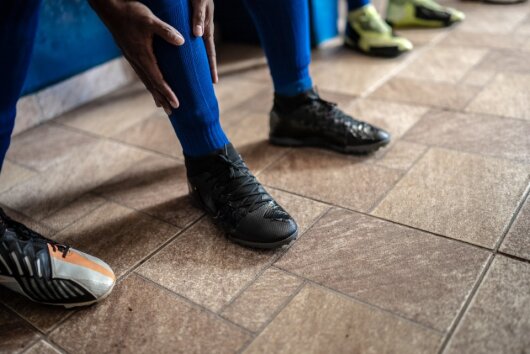Ever seen someone wearing something that looks a bit like a watch but also…doesn’t? Chances are they’re wearing some form of wearable tech for tracking fitness goals – should you be doing the same? If you want to get more active, we say yes.
Stats about yourself are endlessly interesting even when they don’t really mean much – every morning I check out what my fitness tracker has to say about how I slept, even though I know when I’ve slept badly. Somehow seeing the night plotted on a little graph on my phone makes me feel a bit better about my broken sleep.
Similarly, even though I know when I’ve been active I still like the validation of looking at the stats – knowing that I’ve hit my step target makes me feel like I’m doing something productive towards hitting my fitness and weight loss goals and if I haven’t hit my target then I know that I need to get out and make sure that I do, which is very motivating.
Recent research by Aviva has found that almost 10 million adults in the UK now use wearable tech to monitor their fitness levels, so I’m not alone. One in five of us now wear the gadgets to track our steps, sleep patterns and even our resting heart rates – but with so many on the market, how do you choose one? Let us be your guide…
The MAN v FAT guide to wearable tech
Fitbit Alta HR
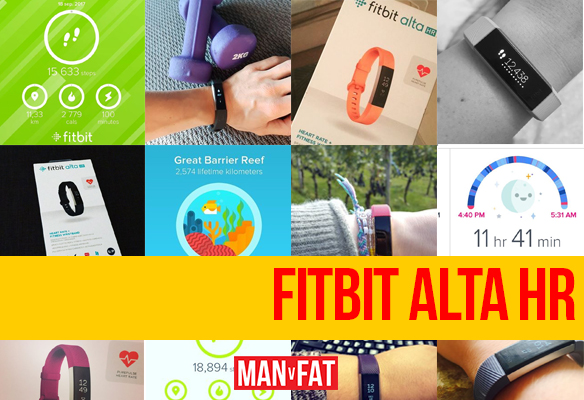
One of the most popular trackers on the market, the Fibit Alta HR is a new and improved version of (you guessed it) the Fitbit Alta, introducing a heart rate tracker and a better strap. The Alta HR tracks your step count, heart rate and sleep patterns and it’s backed up by Fitbit’s sleek app which you can also use to record your food and water intake.
Price: £129.99
Pros: Tracks heart rate, automatically detects when you’re exercising, if you’re a Weight Watchers member you can link up the Fitbit app to the WW app and automatically earn Fitpoints for your activity. The Alta HR can also wake you up with a silent vibrating alarm so you wake up in a panic thinking ‘what the HELL is that’ before you remember that you’ve worn it to bed (this may or may not happen to yours truly on a daily basis)
Cons: Looks pretty ugly (although you can buy different straps for it)
Best for: Those looking for a good all-rounder, especially if you want to increase your daily step count.
What they say: “Really like this Fitbit, it is very informative and actually makes you move around a lot more than if you didn’t have it” – Jacks, Amazon reviewer
Apple Watch
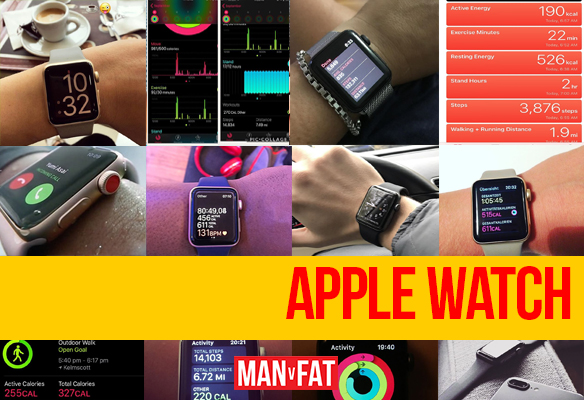
Apple’s first foray into the wearable tech market, the Apple Watch aims to make it easy to keep track of your life simply by looking at your wrist. With a huge array of supported apps, you can do pretty much everything: checking your email, asking Siri what the weather’s going to be like, playing a game of Sonic Dash if you like your games on tiny tiny screens. And you can also use it to tell the time – who knew!
Price: From £249 for the older Apple Watch 2 to £399 for the new Apple Watch 3. Or £749 for an Apple Watch 3 with a fancy strap.
Pros: You can use it with loads of different apps and get info on the latest news, weather, etc., so it doesn’t just have to be something you wear purely to keep track of your step count. It will suit swimmers as you can use it to track your pool workouts (although I don’t know quite how happy I’d feel willingly submerging my £399 device in water…), plus if you’re a gym-goer you’ll be able to use Apple’s new GymKit functionality which pairs with fitness machines to show you personalised stats from your workout so you’ll no longer wonder if the 400 calories the treadmill tells you you’ve burned is accurate.
Cons: It’s one of the more expensive options, so might be out of your price range if you’re just looking for a fitness tracker. If you’ve gone for the older model you have to keep it connected to your phone to be able to use features such as GPS tracking.
Best for: Those who want their wearable tech to multitask
What they say: “The apps are great and I use the workout app every day as it’s interesting just to see how many steps I do” – Gill6746, John Lewis reviewer
Polar FT7 Heart rate monitor
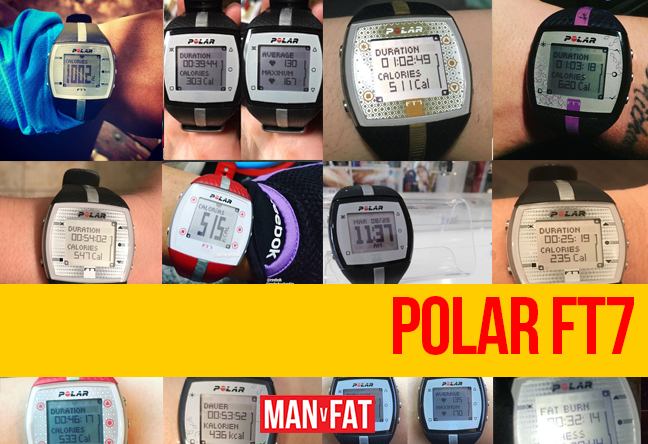
Polar do a huge range of different trackers, from simple heart rate monitors to more fancy, professional-level bike computers and sports watches, but for the purposes of this guide we’re looking at the original Polar heart rate monitor, which gives you an accurate heart rate reading via a strap that you wear around your chest.
Price: Starts at around £40 for the basic model
Pros: Gives a more accurate heart rate reading, which in turn will give you a better idea of how many calories you’ve burned while exercising. It tells you whether you’re in the ‘fat burning zone’ which may inspire you to work harder. It’s a very simple piece of kit but might be for you if simply seeing calories burned during a workout is what you want.
Cons: It tracks your heart rate and time spent exercising and er…that’s it. It isn’t intended to be worn all day so this isn’t for those who want to keep tabs on their step count, distance travelled or sleep patterns.
Best for: Fitness fans looking for a simpler, cheaper model.
What they say: “This does exactly what it says in a very straight forward easy to follow manner. If you just want the headline data this is the model to buy” – Schecter Man, Amazon reviewer
Jawbone UP 3

Price: £129.99, although it is currently heavily discounted down to just £29.98 on Amazon
Pros: The Jawbone UP is one of the better-looking fitness trackers on the market, managing to look like something you’d actually want to wear instead of a clunky bit of plastic. It syncs with what it boasts is an award-winning app and can track steps, distance, heart rate (including resting heart rate), sleep patterns and calories burned throughout the day.
Cons: Its battery life isn’t great and many people find it uncomfortable to wear
Best for: Those who want a budget option
Huawei Watch 2

True story – I recently bought a Huawei phone, and when I told my mum (in passing, not because I’m 12 and need her approval) she simply said ‘ahh, the Apple of China’. Which pretty much sums it up. Like Apple, they’ve also started producing a smart watch. It runs on Android Wear and can do all manner of things including showing you your emails, calendar, weather, etc., but the company are making a big deal of its sports features in an attempt to capture the fitness-focused corner of the market.
Price: Around £269
Pros: It can give you a lot of information about your daily activity levels, including how much time you’ve spent standing and how many times you’ve stood up as well as the standard number of steps taken and distance covered. It tracks your heart rate and can show you stretches to incorporate into your exercise sessions.
Cons: Users have slated its small screen and poor battery life and like the Apple Watch, it’s rather pricey.
Best for: Those who want a cheaper, non-Apple smart watch
What they say: “Very happy with this product and with the amazing functions available. This will now replace my phone when going running or cycling” – James Ross, Amazon reviewer
Garmin Vivosmart 3
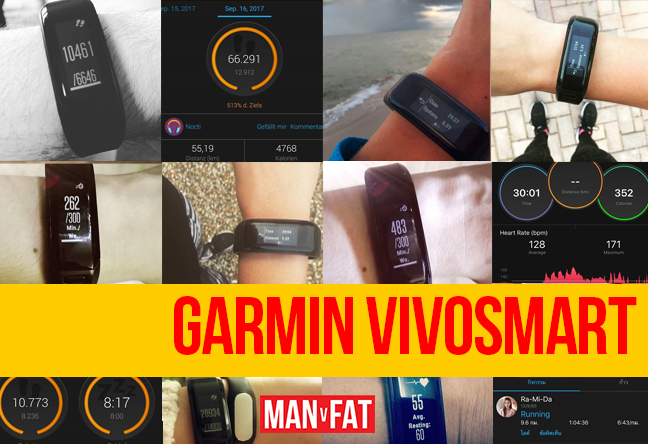
Garmin watches have long been the preferred choice for marathon runners, cyclists and golfers who want an accurate, detailed breakdown of their workouts and how well they’re hitting their targets. Now Garmin have launched the Vivosmart in an attempt to appeal to the more casual fitness fan.
Price: £129.99
Pros: Features everything you’d expect from a wearable fitness tracker, including step count, distance and calories but it can also tell you a few things that the others can’t with its fitness monitoring tools, including a handy rep counter for strength training, your VO2 max (a measure of aerobic fitness) and ‘fitness age’. It also focuses on wellbeing with an all-day stress tracker and a ‘relaxation-based breathing timer’.
Cons: No GPS, so not for you if you want to track distances. Some users find the display difficult to read outdoors.
Best for: Gym-goers who want an easy way to keep track of reps
What they say: “Easy to use and great for the gym” – Giuseppeseverini, Amazon reviewer

Garmin VivoActive 3
If you’re new to the smartwatch world or considering upgrading from your basic Fitbit or Garmin that just keeps track of your steps then the VivoActive 3 is an incredible starting point for the possibilities that a smartwatch can bring. As well as tracking elevation, steps, heart rate there is a functional GPS.
Importantly, you also get a series of notification options from your smartphone which can help you keep control of music, weather, reviewing your workouts or simply checking up on who is calling you. Perhaps most importantly of all none of this is at the expense of battery performance – an issue which Garmin knocks out of the park. Lock the watch when you’re not interacting with it, keep the screen brightness below 30% (you won’t need more) and keep your GPS usage to the times you actually need it and you’ll get 3-5 days use before you have to recharge, best of all the watch will take on a full 100% charge in a little under an hour in our trial.
Price: £229.99
Pros: Smartphone notifications (some work better than others – you won’t want to read your email on this thing), accurate HR tracking, step counting, brilliantly quick GPS and stylish looks in a non-clunky, lightweight package.
Cons: We’d love a longer battery life but when you look at all the things the VivoActive 3 is doing for you then it seems churlish to ask any more of the battery.
Best for: Anyone looking to get started in the wonderful world of smart watches – it’s a very sound investment.
What they say: “I love this and the Garmin PR team will have to pry it off my cold dead hand. Also I should probably wear it on my wrist rather than on my hand because that’s stupid.” Shan, MAN v FAT founder.
—
We’re not going to tell you which one is the best because everyone is looking for something different from their fitness tracker. Instead, what we will say is that tech companies are waking up to the fact that most people are striving to become more active and that can only be a good thing. If you’re looking to up the exercise, then using one of these gadgets is a great way of motivating yourself to move more. But bear in mind – the 2017 version of nothing being more boring than hearing about someone’s dream? Hearing about someone’s Fitbit stats.

